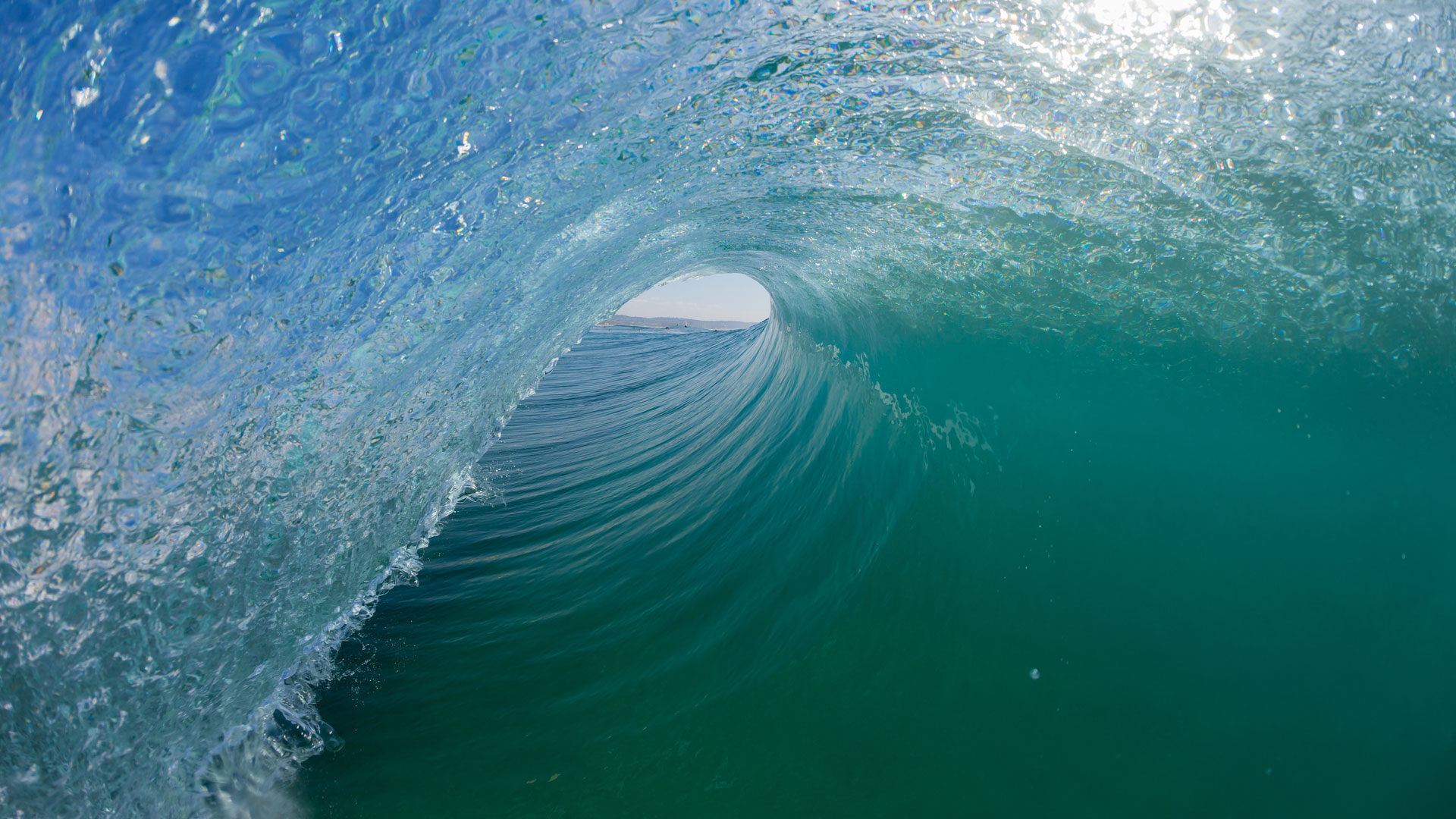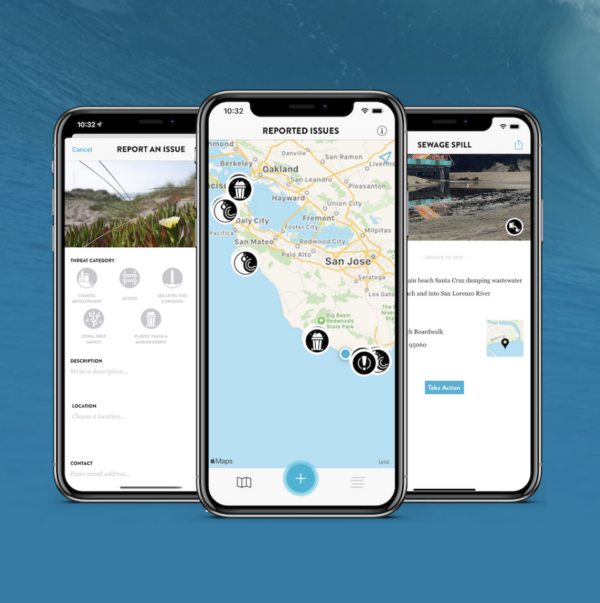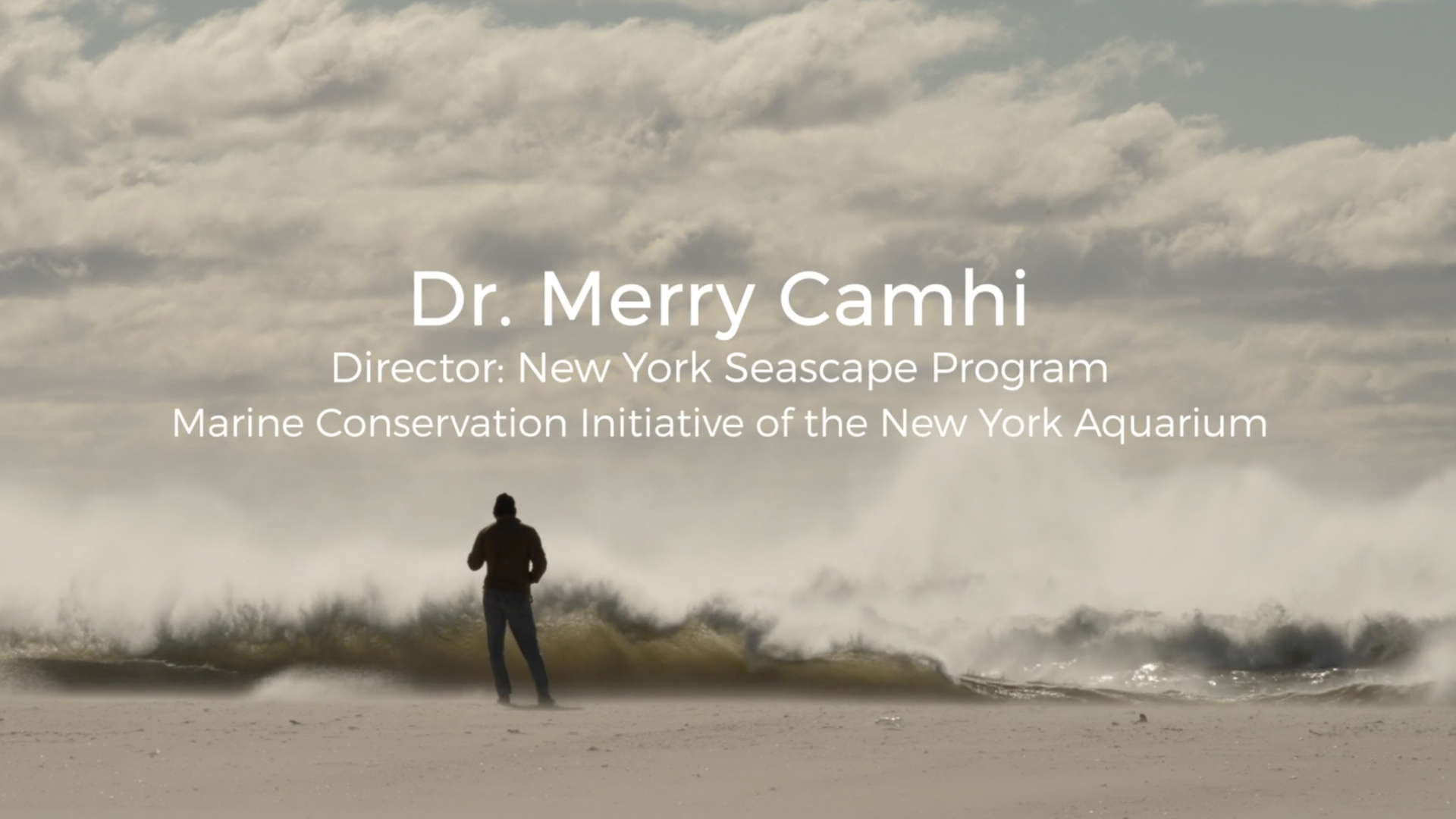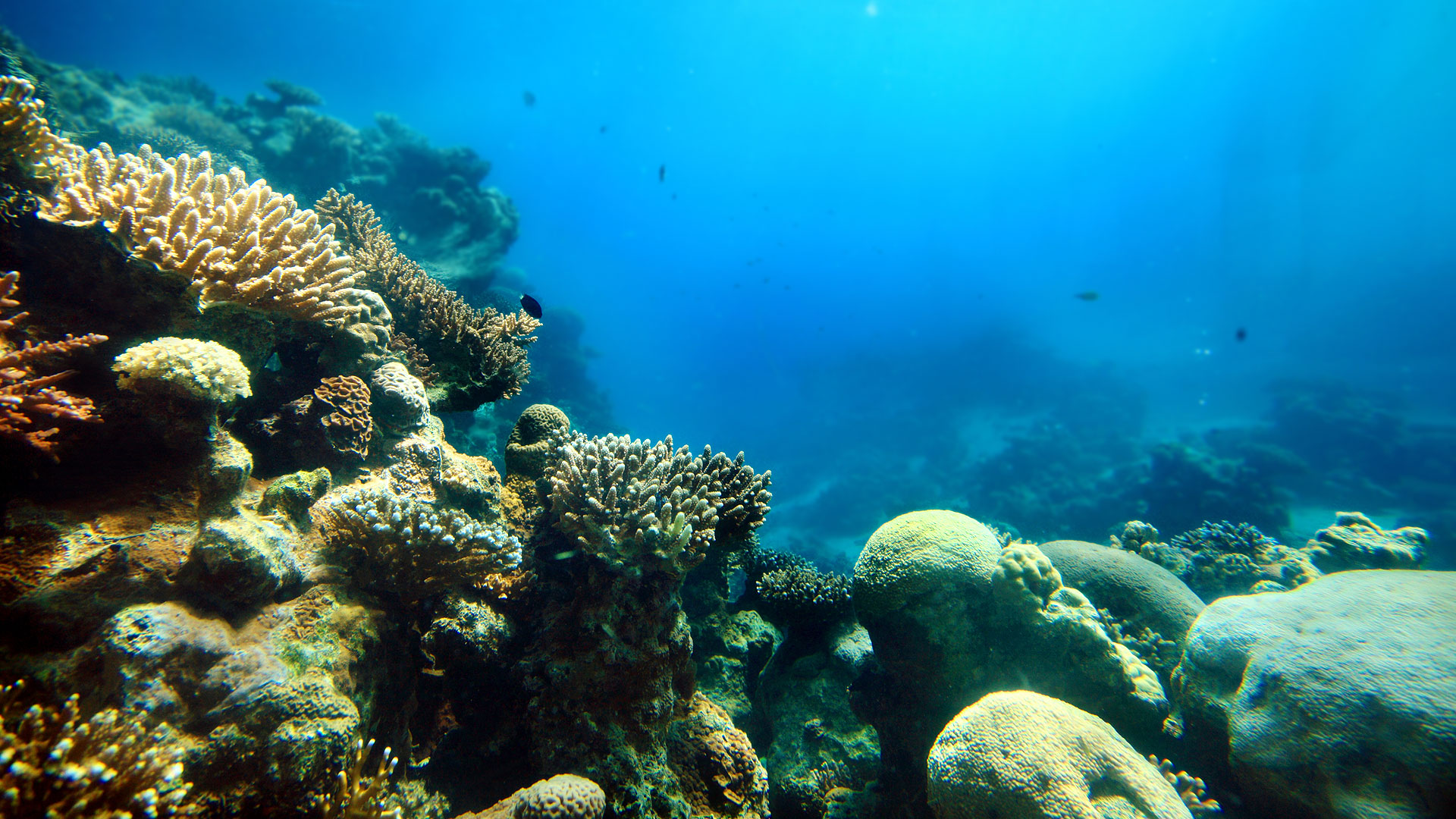PROTECTING OUR OCEANS ONE WAVE AT A TIME
A Q&A with Save the Waves CEO Nik Strong-Cvetich
Save the Waves Coalition is a California-based international nonprofit that works with a host of organizations dedicated to protecting surf ecosystems. Nik has many years of experience leading innovative conservation projects, and his mission is to provide coastal communities with the tools they need to be effective in valuing, protecting, and managing their own natural resources.
Q: What first inspired you to become a conservationist?
A: Rationality. What else are we going to do? If you’re a rational human being and you observe the natural ecosystems around you, what choice do you have but to try to protect the things that you like to do? I spent a lot of time as a kid out in nature, by the coast and on rivers, seeing things change. You start to draw conclusions just by observing.
Being in conservation shouldn’t be a bummer. There’s an onslaught of negative news about the environment all the time. There’s people that are climate depressed; you’re not going to do anything about climate change if you’re sad about it. One of the things we do at Save the Waves is get people excited about what they care about. Environmental challenges are reported so numerously and ubiquitously that it becomes difficult to segment it off into what your passions are, and then lead with your passion. That’s why surfing is a really good catalyst for change, and for having a conversation about conservation on the coasts.
Q: What is it that makes surfers such great climate actionists?
A: Observation. Surfers tend to know their place better than anybody else. There are lots of surfers who travel and see new places, but everyone has their “home break”. Everybody that goes to that home break creates a relationship with that place and understands what happens to it.
What is the sand doing? What is the tide doing? What is the wind doing? All those things are keen in terms of accumulating data about an ecosystem. Surfers may have the most data on some of the coastal interfaces of any other group, because they really pay a lot of attention; because what they love to do is attached to it.
When you throw climate into the mix, that changes things drastically. Surfers are very attuned to how things are changing, even down to, “we haven’t had one of those big swells for a while,” or, “there’s lots of big swells coming from a different direction.” They are starting to observe more, including the fact that it doesn’t rain in California anymore, and the sediment in the ocean is less because the creeks are not pumping out the sand flow that they used to. That changes how waves break. I don’t think surfers would say, “we’re great climate activists,” I think that they are, but you don’t even need to approach it like that. You can just ask, “what’s happening in your home break?” And almost every surfer will tell you that it’s changed.

Source: Alex Wigan
Q: What is the current state of surf ecosystems in the United States? What sort of threats, opportunities, and policies are in place?
A: It’s different per state. Every state has a different environmental regime, and each state has a unique coastline. If you’re talking about Florida, then you’re talking about sea level rise, hurricanes, and algal blooms. If you’re talking about North Carolina, you’re talking about erosion and disappearing islands and sandbars. If you’re talking about California, it’s relatively well protected against coastal development.
In a lot of ways, surf ecosystems are in relatively good shape. In California, again, water quality is always an issue. But we have a number of state agencies (the State Water Resources Control Board, or the Regional Water Quality control boards) that do a good job of protecting the coastline from some egregious water quality issues. All that is to say that climate change will change things drastically, and how we change, how we adapt to climate change will affect these places more than anything else.
Surf break isn’t something that’s generally observable by law. It doesn’t have legal status or jurisdiction, so it’s not considered an asset within a community. If you’re going to plan how your city will adapt to climate change, you take into account the assets that are on the books: roads, sewage infrastructure, buildings and homes, water supply, etc. If your assets to a community are natural, like a surf break, it’s probably not on those books. When you start to plan out how you’re going to adapt to sea level rise and increased storms, you are going to prioritize what’s on the books. You may prioritize the road over the surf break or the house over the surf break.
That’s the biggest threat: how people adapt isn’t sufficiently educated on coastal processes. We’re going to lose a lot of natural capital unnecessarily because people won’t properly plan out their adaptation strategies.
Q: Besides producing rideable waves for surfers, what are some of the ecosystem services that surf ecosystems provide?
70% of the world’s best surf breaks are also in biodiversity hotspots. Within that, there are key biodiversity areas that are the most important places to protect in the world. There are very important ecosystems that overlap with the world’s surf spots by 25%. When you dissect a surf ecosystem, many of the things that create a breaking wave are really important marine habitats: a coral reef, or even our rocky reefs here In California that the kelp forest attaches onto. The great kelp forests of Monterey Bay are attached to the reefs that also make the breaking waves.
Some of the most amazing waves in the world are directly related to coral reefs and coral passes. Those passes are incredibly important for a number of species, and they’re usually attached in a watershed. So there’s provisioning services: water for people, biodiversity, etc. There’s also the river mouths that deposit sediment into the watershed. That’s an ecosystem service, it reduces flooding and coastal erosion. There are migratory fish that are dependent on those places.
Additionally, there’s a whole overlay of indigenous people and cultural services. A lot of these places are super important to culture. Malibu is very important for the Chumash people. In Hawaii, surf ecosystems are incredibly important places for the people that have been there for millennia. Oftentimes, the reason why a surf break is good is because there is a break in the reef where people can come and go from the ocean: the river mouth, the creeks. . .all those unique interfaces with the land to sea connection are usually where indigenous people went from the land out into the ocean.
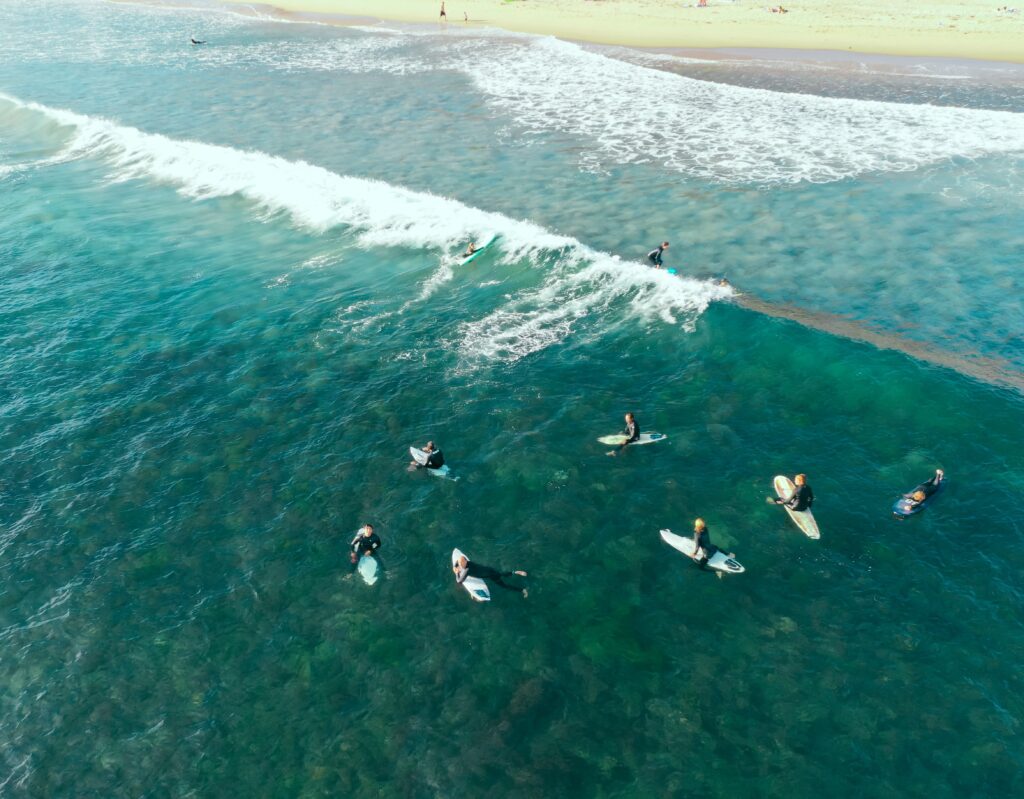
Source: Drew Dau
Q: How important are surf ecosystems in mitigating the effects of climate change?
Super important. Healthy reefs help in a number of ways: reducing storm surges, wave interaction, coastal erosion. Surf breaks are at the forefront of all those things. Energy dissipates in a breaking rideable wave before it hits the shoreline, so it is not hitting infrastructure or eroding the coast further. Having more surf breaks would create more resilient shores. Dune ecosystems are also really important.
Q: How does Save the Waves work to protect surf ecosystems?
Save the Waves is the only organization that thinks about the surf ecosystem concept, because we made it up. We think of a surf ecosystem as being three things. Firstly, it’s the geographic and geological features that make a rideable breaking wave. Secondly, it’s the plants and animals that are dependent upon that place as well. Thirdly, it’s the human communities that are dependent on that system.
We know that unique cultures and economies pop up around these breaking rideable waves, which is a distinctive characteristic of the ecosystem, because usually, we don’t count people as part of it. In this case, people both influence it and are influenced by it, for wellbeing, culture, the economy, etc.
We have three strategies to protect these places, which we call “protect”, “steward” and “defend”.
We create protected areas, like our World Surfing Reserves or our surf Protected Area Networks. Those are formal, protected areas similar to a state park, national park, or marine reserve. They’re legally bound with a management plan and an outline saying it’s a protected area.
Buttressing that is stewardship projects. For coastal resilience, climate resilience, and reducing threats to surf ecosystems, we believe that effective stewardship of the place has to accompany legal protection.
The last one is to defend. You need a mobilized constituency of people to actually stand up for these places, or the other two don’t really work.
We found that this combination of protect, steward, defend is a strong conservation model. Lots of times, people will declare protected areas, but they’re not effective, because local people don’t know anything about them or don’t benefit from them. That’s an important part: having a constituency that is motivated towards the conservation of that place.
We have a number of programs: our Surf Protected Area Networks, our World Surfing Reserve program, our mobile app that documents stewardship challenges across the globe, and our campaigns that we run.
Q: What is the difference between the Surf Protected Area Networks and the World Surfing Reserve Program?
They work in concert with one another. The World Surfing Reserve Program has been around for about 12 years now. It’s not a legally binding title; because we’re an international group, we can’t just parachute in and say, “you’re a world surf reserve, here’s what you can and can’t do in your own country or coastline.” It’s an honorary designation, but it is much more than that because it has a stringent conservation regime attached to it.
There are only 12 World Surfing Reserves across the world. We get five to six applications every year and we approve one per year. These communities have to really, really want this designation, and then we work with them to make sure that it delivers on its conservation promises. It’s such a high-profile program that it inspires a lot of other people to take care of their surf breaks as well.
The Surf Protected Area Networks are the opposite. We asked ourselves, “How do we scale this protection model up?” How many surf ecosystems can we get legally protected by working at a regional level? We looked at different legal strategies to get more and more waves protected. We found when there’s one world surfing reserve, it tends to create demand for a lot more protected areas, so we see partner groups starting to unroll this. It becomes much easier to work towards this goal once it’s demonstrated in one place.
Q: How does the Save the Waves app help facilitate good stewardship practices?
The app supports the World Surf Reserves and Surf Protected Area Networks. One of the biggest challenges to having a protected area is monitoring it. Usually, there’s very few staff and not a lot of funding for enforcement or monitoring. By crowdsourcing that function to surfers around the world who are motivated to take care of their place, we can essentially make them the eyes and ears of each one of those places through mobile technology. Almost every surfer around the world has a smartphone at this point.
The app is pretty easy to use, you just take a picture of the threat to the surf ecosystem you’re concerned about. There’s a menu of different thread options, and you can select which thread it belongs to and write a blurb about what’s going on. Then it’s geotagged to that location and timestamped. We can take that information and share it with our partners on the ground who are working on stewardship projects. We can even take on our own project, or share it with a larger dataset that informs policy outcomes, like the Break Free From Plastic brand. It’s a way to identify where the priority stewardship projects are.
Q: What are some things that ordinary people can do to protect and restore surf ecosystems, even if they don’t live near one?
Going to one is important, so that you can see it and care about it. It’s hard to care about something if you haven’t seen it.
Understanding the dynamics of the watersheds in which you live is important. In some places, that determines the flow of sediment to whatever surf ecosystem we’re talking about, and other times it determines nutrient loading to the receiving waters of the Gulf of California
What you do on land affects what happens in the ocean, and that’s especially true with coral reefs. Climate change is threatening coral reefs, so are boats and anchoring, but one of the bigger threats is sedimentation and runoff from the land. If you’re thinking about those as crucial ecosystems, those are downstream of us.
Minding your habits on consumer goods. I was telling my son this the other day. We just bought these shin guards for him, and they’re inside of a piece of plastic, then each one is wrapped in a plastic. Do we really need to use something that’s going to last longer than I’m going to be alive, just to transport those shin guards, which are meant to protect his legs? If the shin guards are going to get damaged, how would they do their job? If it doesn’t make sense, why are we doing it?
There are more and more tools becoming available to help reduce our impact from a climate standpoint. Wearing hair shirts, eating vegan, and only riding a unicycle isn’t a feasible change for everybody to make. We have to make the change feasible for people.
Those are the next steps where we can all dig in.
TRANSCRIPTION: TCP Editor in Chief Ellyn Lapointe
Global Network. Local Advocates.
SAVE THE WAVES APP
TAKE A PHOTO
Capture what’s happening when you see an issue or threat at your local surf spot or beach.
SELECT A THREAT
Choose an issue from our threat category menu. Write a short description to provide more detail.
TAG LOCATION
Geotag your location and upload it to the app! Your post will to alert us and the public to the threat.
Visit the website to learn more and download the App!
Want to learn more or get involved? Check out these resources!
To check the latest Save the Waves news, click here!
Visit Soul & Surf to learn more about surf ecosystems!
Learn about the history and future of wave reserves!

